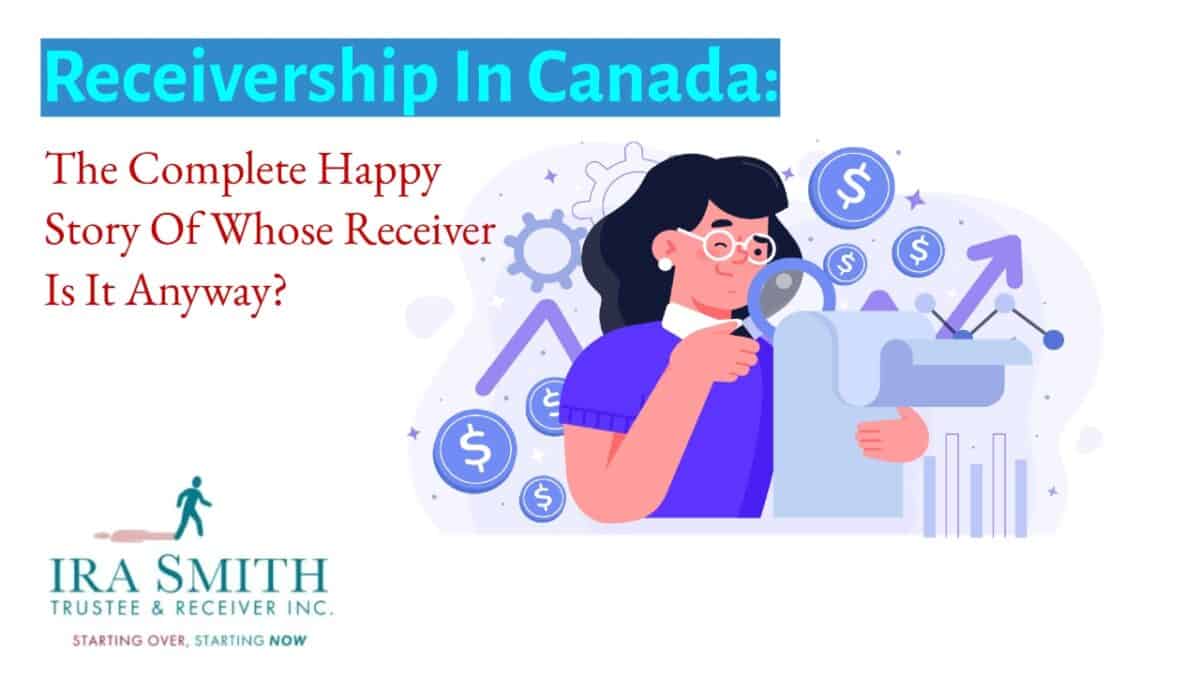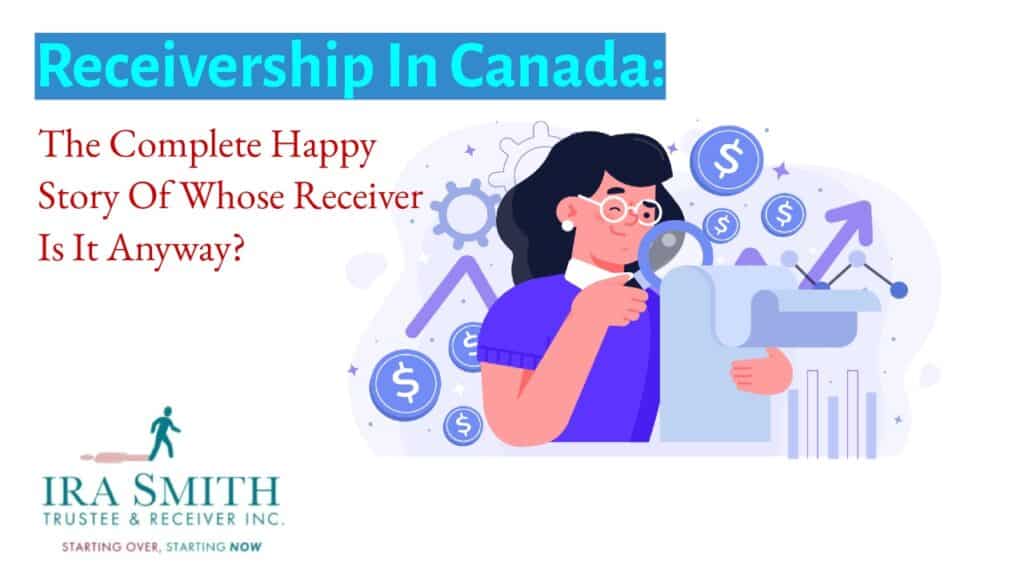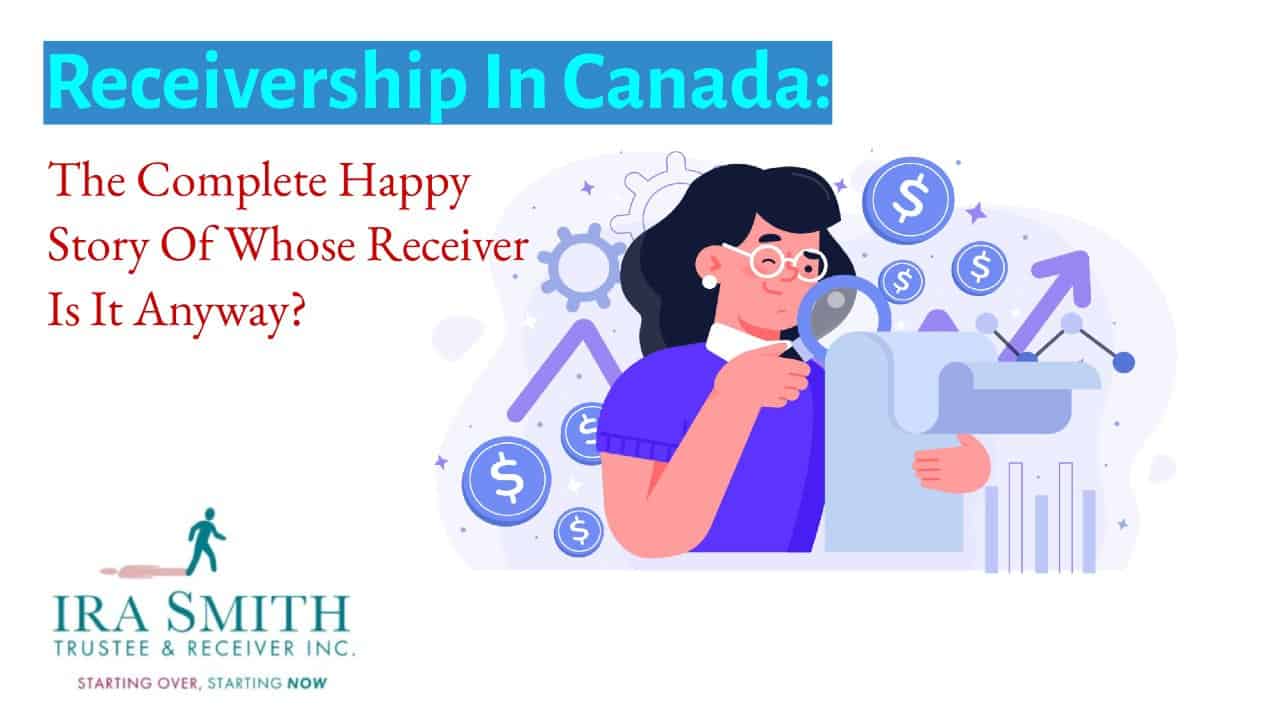Overview of In Receivership
I have just read a decision of the Ontario Superior Court of Justice dealing with an important aspect of real estate in receivership in Canada. The case is about when the Debtor/real estate owner does not believe that the court-appointed receiver has made proper decisions about the listing of the property for sale and the sale of a commercial property in receivership.
It also deals with the role of receivers and how they interact with the debtor, secured lenders and unsecured creditors.
In this Brandon’s Blog, I first provide some background of being in receivership in Canada. Then I discuss and highlight the issues found in the case of Rathcliffe Properties Inc. v. 2184698 Ontario Inc., 2024 ONSC 5077 (CanLII).
Legal Basis for In Receivership
A receivership is a legal process available to secured creditors, whereby a company’s affairs, business and property are entrusted to a receiver to manage and eventually sell the assets. Secured lenders may enforce their security to recover loans when the borrower defaults in its payment obligations relating to the secured debt. This remedy available to secured creditors is known as receivership, while the debtor is said to be “in receivership“.
If a business debtor does not make payments or otherwise defaults on a secured loan, the secured creditor would have the right to appoint a receiver to collect the money owed. Before appointing a receiver, a secured creditor must first issue a “Section 244” notice of intention to enforce security. This is a notification that secured creditors must send to defaulting debtors before appointing a receiver. Section 244 refers to that section number in the Bankruptcy and Insolvency Act (Canada) (BIA).
The notice states that the security covers certain assets, that the company in default owes a specified amount to the secured creditor, and that the creditor may enforce the security after 10 days. The company in default may waive the notice period and consent to the appointment of the receiver.
Under the BIA, only a licensed insolvency trustee (formerly called a trustee in bankruptcy) can be a receiver. No other party is licensed to administer the receivership process in Canada.
Types of Receivers In Receiverships
There are two types of receivers in receivership in Canada: (i) privately-appointed receivers; and (ii) Court-appointed receivers.
Privately-Appointed Receivers
A privately-appointed receiver is a licensed trustee who is appointed by a contract between the insolvency trustee and the secured creditor. A private receiver is typically used when there is no dispute to ranking among secured creditors or various claims to ownership of the company’s assets. The powers of a receiver listed in the security document give the privately appointed receiver more limited powers than a court-appointed receiver gets under a court order.
Court-Appointed Receivers
A receiver is court-appointed when the secured creditor makes an application to the court for the appointment of a receiver with more expanded powers. Like a privately-appointed receiver, a court-appointed receiver takes control of a company’s property because of financial distress and when there is a dispute among secured creditors and others regarding the ranking of secured claims and ownership of property.
Both kinds of receivers are tasked with protecting and preserving the value of the company or property and are certainly given broader powers by the court.
Duties and Responsibilities of a Receiver In Receivership
A Receiver is a licensed insolvency trustee appointed to manage and control the assets, property, or business of another person or entity, typically in a situation where the person or entity cannot manage their affairs due to financial difficulties, bankruptcy, or other reasons. In receivership in Ontario, a Receiver can be appointed either privately or through a court order.
Private Appointment
When a Receiver is appointed privately, it is typically done so through a contractual agreement between the Receiver and the secured creditor requiring the Receiver’s services. The Receiver’s duties and responsibilities may include:
- Managing and controlling the assets, property, or business of the person or entity.
- Collecting and managing debts, accounts receivable, and other financial obligations.
- Paying bills, expenses, and other financial obligations.
- Managing and overseeing the day-to-day operations of the business or property.
- Identifying and realizing assets to convert them into cash.
- Negotiating with creditors, suppliers, and other stakeholders to resolve disputes and improve the financial situation.
- Preparing and submitting financial reports and statements to the appointing creditor and other stakeholders.
- Providing advice and guidance primarily to the appointing creditor.
A privately appointed receiver needs to consult with and get approval from the appointing creditor for its proposed actions and activities. In a private appointment, the Receiver’s duty of care is mainly to the appointing creditor.
Court-Appointment
When in receivership a Receiver is appointed through a court order, many of the court-appointed receiver’s duties are the same as for a privately-appointed Receiver. The main differences though are that in receivership supervised by the Court, the court-appointed receiver:
- Owes a duty of care to all parties.
- Must obtain the approval of the Court for its actions and activities.

Stakeholder Considerations in Receivership
Stakeholder considerations in receivership leads us perfectly into discussing the case of Rathcliffe Properties Inc. v. 2184698 Ontario Inc., 2024 ONSC 5077 (CanLII).
This case was heard in the Ontario Superior Court of Justice involving a court-appointed receiver appointed to sell real property. The Debtor (2184698 Ontario Inc.) challenged the Receiver’s real estate receivership process, alleging that it was not conducted in a commercially reasonable manner and was biased towards the lender (Rathcliffe Properties Inc.).
The Debtor’s Argument
The Debtor, being the property owner, claimed the Receiver breached its duty under s. 247 of the BIA to act in good faith and in a “commercially reasonable manner.” They alleged the Receiver set a low listing price for the real property ($4,500,000) potentially based on “liquidation basis” appraisals rather than “fair market value.” They also argued that the court-appointed receiver showed favouritism by consulting only the Lender about the realtor and listing price, denying the Debtor crucial information.
Finally, they argued that the Receiver withheld crucial information by not sharing its appraisals with the Debtor.
Receiver and Lender’s argument
They argued:
- The Receiver acted properly by basing the listing price for the property in question on professional advice and independent appraisals.
- Choosing not to share appraisals to avoid giving the Debtor an unfair advantage in the sale was proper.
- Consulting the Lender due to their expertise and potential buyer network, while the Debtor lacked relevant information and consistently overestimated the property’s value, was also appropriate.
The Court’s Findings
The Court found it more efficient to address the substance of the motion, providing clarity and avoiding further delays. The Court dismissed the Debtor’s claims of a breach of the BIA, stating:
- The Receiver was not obligated to share appraisals.
- The listing price, based on professional advice from professinoals working in this kind of real estate market, did not breach the court-appointed receiver’s duties or the BIA.
- Consulting the Lender was justifiable, aiming for the best interests of all stakeholders.
- The Court considered the motion premature, stating concerns about the sale process can be raised at the Sale Motion, where a complete evidentiary record would be available.
Since the Court found no evidence of a breach of the BIA and dismissed the Debtor’s motion in this real estate receivership, the Court ordered the Debtor to pay costs to both the Receiver and the Lender. The Court also lifted an interim injunction the Debtor obtained stopping the Receiver from continuing the sales process.
Clashing Interests in Receivership: Lender vs. Stakeholders
The receiver’s duty to act in the best interests of all stakeholders can clash with the specific needs of the lender because the lender prioritizes recovering the debt owed to them, even if it means selling the property for a lower price. Conversely, the receiver must consider the interests of all stakeholders, including the debtor, and aim for the highest possible sale price, even if it takes longer.
Here’s how this tension plays out in this case:
- The Lender’s Interest: The lender (Rathcliffe Properties Ltd.) wants to recover the $2.9 million loan it provided to the debtor (2184698 Ontario Inc.) as quickly as possible. They likely see the receivership and subsequent sale of the property as the most expedient way to recoup their investment.
- The Receiver’s Dilemma: The court-appointed receiver has a fiduciary duty to act in the best interests of all stakeholders, not just the lender. This means they must strive to obtain the highest possible price for the property, under the circumstances, even if it delays the Lender’s recovery.
- Conflicting Approaches: The debtor argued that the receiver’s listing price of $4,500,000 was too low and favoured a quick sale to satisfy the Lender’s debt. However, the court found no evidence of this, highlighting that the Receiver based the listing price on professional advice and appraisals. The court emphasized that the market ultimately determines the property’s value, not just the initial listing price.
This case demonstrates the inherent tension in receivership scenarios. While the Lender’s primary concern is recovering their debt, the receiver must balance this against the interests of all stakeholders, including maximizing the sale price for the benefit of all parties involved.
Key Takeaways From This In Receivership Case
This situation highlights the conflicting priorities often found in receivership proceedings. On one hand, financial institutions lenders are focused on getting back their money, while on the other, the Receiver has to consider the needs of all stakeholders involved, aiming to achieve the highest possible sale price to benefit everyone.
In Receivership: Conclusion
We experience these same issues whenever we act as a real estate receiver. We rely on real estate experts both for appraisals and for the receiver sale of real estate. We must rely on real estate professionals in order to show that we properly handled our duties as a real estate receiver.
I hope you enjoyed this real estate receiver in receivership Brandon’s Blog. Do you or your company have too much debt? Are you or your company in need of financial restructuring due to distressed real estate or other reasons? The financial restructuring process is complex. The Ira Smith Team understands how to do a complex restructuring. However, more importantly, we understand the needs of the entrepreneur or someone with too much personal debt.
You are worried because you are facing significant financial challenges. It is not your fault that you are in this situation. You have been only shown the old ways that do not work anymore. The Ira Smith Team uses new modern ways to get you out of your debt troubles while avoiding bankruptcy. We can get you debt relief freedom.
The stress placed upon you is huge. We understand your pain points. We look at your entire situation and devise a strategy that is as unique as you and your problems; financial and emotional. The way we take the load off of your shoulders and devise a plan, we know that we can help you.
We know that people facing financial problems need a realistic lifeline. There is no “one solution fits all” approach with the Ira Smith Team.
That is why we can develop a restructuring process as unique as the financial problems and pain you are facing. If any of this sounds familiar to you and you are serious about finding a solution, contact the Ira Smith Trustee & Receiver Inc. team today.
Call us now for a free consultation. We will get you or your company back on the road to healthy stress-free operations and recover from the pain points in your life, Starting Over, Starting Now.
The information provided in this Brandon’s Blog is intended for educational purposes only. It is not intended to constitute legal, financial, or professional advice. Readers are encouraged to seek professional advice regarding their specific situations. The content of this Brandon’s Blog should not be relied upon as a substitute for professional guidance or consultation. The author, Ira Smith Trustee & Receiver Inc. as well as any contributors to this Brandon’s Blog, do not assume any liability for any loss or damage resulting from reliance on the information provided herein.









